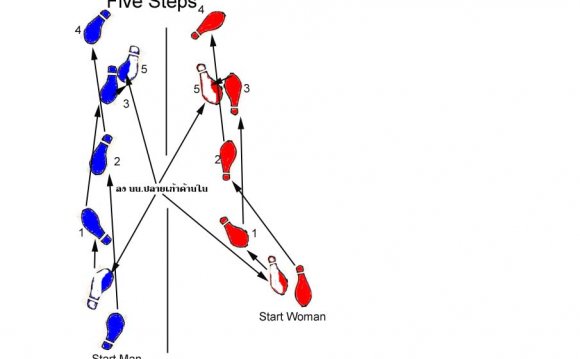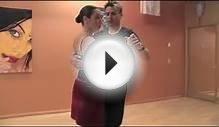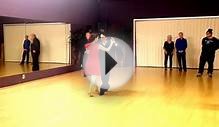
History[edit]
On such basis as several instructional tango books published between 1911–1925 very early tango figures are grouped into eight categories: corte, paseo, la marcha, ocho, grapevine, ruedas, news luna, molinette. From that period we continue to have: ocho, sentada, media luna, molinete, sandwich.
This season there exists up to 200 instructional DVDs talking about elements of Argentine tango dance. Included in these are games specialized in tango method and tips tango nuevo milonguero design (identified by estilo del centro in Buenos Aires) and different components of the dance particularly giros. There are many guides and dictionaries to tango terminology on the net. Tango language is explained in lot of books.
Terminology[edit]
Alternate brands are provided in (braces) but use of tango related brands differs: like and or voleo and may even be used to explain exactly the same actions. The names utilized right here follow many sources including English instructional DVDs (such Christy Coté and George Garcia DVDs published by Dancevision), Argentine DVDs which frequently have actually English subtitles, internet sources, and published publications and glossaries.
System place and standard steps[edit]
Effective lead and stylish following is dependent upon correct place of feet, hips, and torso of leader and the follower.
On / off axis[edit]
Position-related ideas of Argentine tango tend to be axis and off-axis roles. Body place for which legs tend to be around perpendicular toward floor is called 'axis' and there's two axis roles associated with one of two legs. Off-axis positions are called apile (apilado, carpa, volcada) or colgada. The center of stability moves outside one's body in case of the off-axis moves.
| Spanish | English | Place | Details – on / off axis | Image |
|---|---|---|---|---|
| Position regular, el eje | Normal position | On-axis | Body position where one leg is around perpendicular toward flooring. Center of weight is the human body. Feet position is by using her heels together, and toes pointing slightly out. Her body weight is using one knee or almost therefore. See in addition . | |
| Carpa, Apile, Apilado, Volcada | Apile (volcada) | Off-axis | Position where both partners tend to be tilting ahead, may vary in level of the tilt or form. Numerous liquid and stylish tango figures is danced in . |
Embrace and styles[edit]
Argentine tango dancing includes a variety of designs that developed in various areas and eras as well as in response to the crowding for the location and even the fashions in clothing. It is danced in an embrace that will change from really open, when the dancers link at arms size, to really closed, where the connection is chest-to-chest, or any place in between. Styles of dance tend to be maybe not predefined by the embrace itself and lots of figures of tango beauty salon style tend to be danced in an open embrace, it is also feasible to dancing tango nuevo in close V-shape embrace. The milonguero (apilado) design is an exception; its close embrace without V-shape and focus on maintaining this embrace through the dance predetermines array of feasible motions and their .
Dance embraces[edit]
| Associated types | Description – Embrace and designs | ||
|---|---|---|---|
| Abrazo cerrado | V-shape close accept | Salon and tango nuevo | The performers' chests are nearer to each other than their particular hips, and frequently there was contact at towards level of the upper body (the contact point differing, according to the height of this frontrunner and the closeness of the embrace). In close embrace, the top in addition to follower's chests come in contact and are dancing with their minds pressing or extremely near one another. |
| Abrazo abierto | Open embrace | Tango nuevo, hair salon | In available embrace, there might be as much room as desired between the partners, but there should always be total contact over the embracing hands to give maximum interaction. Argentine tango performers do not hold their particular upper bodies curved away from both; each companion is over unique axis. Whether open or closed, a tango embrace is not rigid, but relaxed, like a hug. |
| Apilado (estilo milonguero, estilo del centro [de Buenos Aires]) | Square close embrace | Type milonguero | Milonguero form of embrace is danced in closed place, chest-to-chest, using the lovers leaning – or showing up to lean – somewhat toward one another allowing room for legs to go. The follower's left arm place in the leader's neck is a style problem. It originates and is utilized in crowded milongas where there clearly was much people that you're literally moving in "square". In those places the lifted arm prevents touching and accidentally hurting other people during turns. Close embrace, no V-shape. |
| Tango al reves, doble frente | Reverse embrace | Tango hair salon and moderno | Reverse embrace in which both lovers face the same course; it is now made use of just sporadically to perform tango numbers (see ). |
Practise embraces[edit]
Embrace hold made use of during tango training. An example is when both lovers hold arms, the follower holds the first choice's arms, and variations.
RELATED VIDEO












